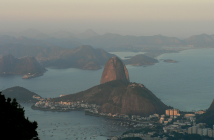International airlines have revealed their long-haul plans to win a contest to break the record for the world’s longest direct flight – to satisfy Mankind’s unquenchable desire to travel the globe in a pressurised tube.
Qatar Airlines has thrown its hat in the ring, intending to launch a new record-breaking long flight on a Doha-Auckland route. The direct journey between Qatar and New Zealand will take 18 hr 34 min, and cover a distance of more than 9,000 miles. State-owned Qatar Airways would thereby overtake the current record-holding longest passenger flight – a Qantas service between Dallas and Sydney, Australia, which takes almost 17 hours to travel 8,600 miles.
Due to the low fuel consumption of the latest generation of engines, today’s aircraft have much longer autonomy than even just a few years ago. The technical dream of flying to the Antipodes without the need to refuel somewhere, has become reality. The battle to lead this race is now unstoppable, with new records knocking previous ones within months. And it is the hotly competitive aviation hubs of the Gulf States that are setting the pace in this international tournament.

Some passenger aircraft today can fly more than 18 hours without refuelling. / Source: Leadconversion.
Qatar Airlines’ record – the date of the Doha-Auckland route’s inauguration is still unknown – will be under immediate threat. Dubai-based Emirates Air will make a firm bid for the title by starting its direct service to Auckland on 1st March and another to Panamá on the 31st, both lasting over 17 hours.
Furthermore, American-based United Airlines has just announced a daily non-stop service from San Francisco to Singapore. Beginning on June 1, the San Francisco-Singapore route will cover 7,339 miles in 16 hr 20 min. And Singapore Airlines has announced plans to relaunch its New York-Singapore direct flight, which ceased in 2013. If successful, Singapore Airlines will regain the long-haul, non-stop record.
Regardless of the impressive engineering achievement, do longer distances mean more satisfactory flights for passengers? While some may prefer a non-stop journey, many may prefer stopovers, giving them the chance for a break. When the stopover is a luxury shopping mall such as Dubai, rather than a cold and unpleasant terminal, the break sounds rather more appealing.





